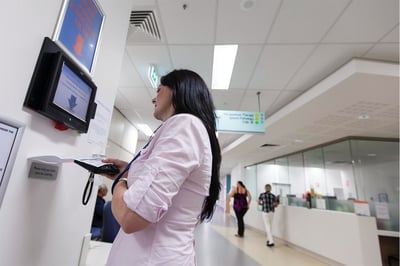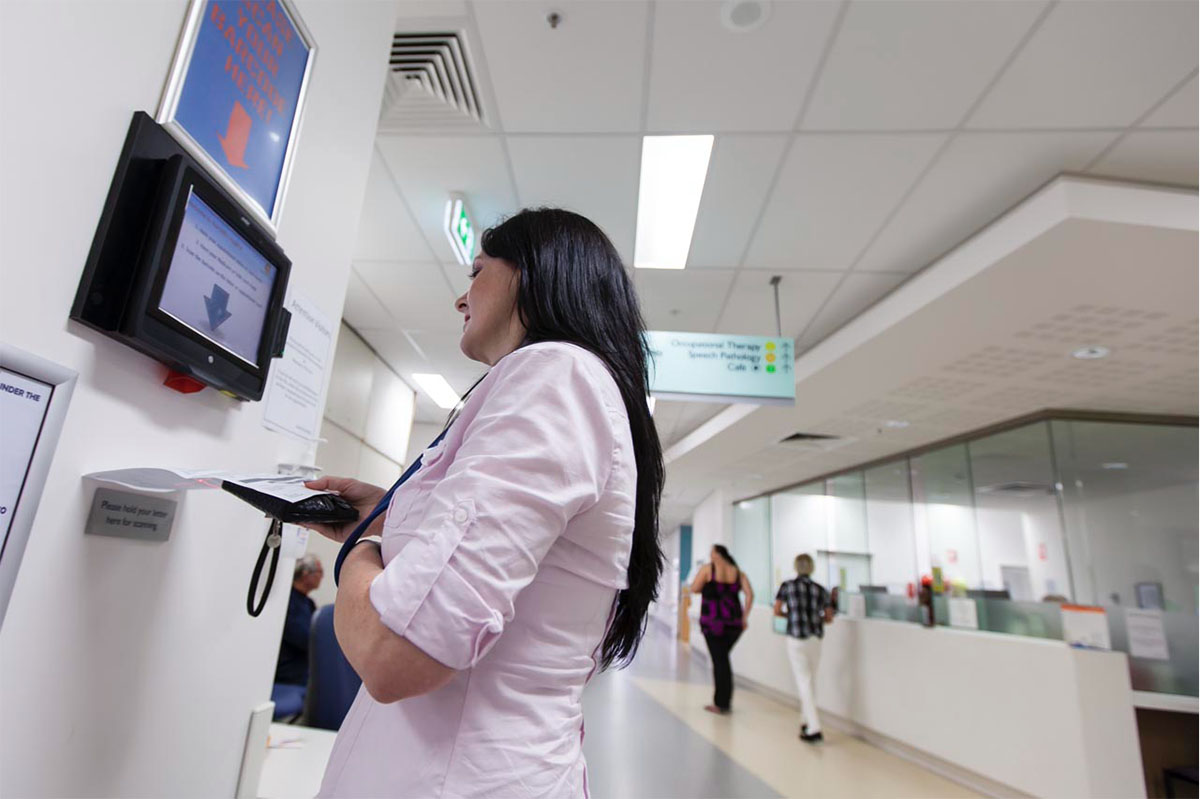
Hospitals are dynamic, unpredictable environments. And communication systems have always been critical for them to function efficiently and smoothly.
Since the COVID‑19 pandemic overwhelmed hospitals around the country, these life‑or‑death situations are even more common. Communication has become ever more complex, with crowded hospitals and the need to screen visitors and patients for signs of the virus.
What communications solutions can help healthcare providers link multiple locations so that critical information is shared instantly with everyone who needs to know it?
Complex Systems
I work with most of the big hospitals in the state of Illinois, and have been watching their needs evolve as they increase security.
Hospitals need to know that only people who are authorized to enter the building are the ones coming in. All hospitals have multiple entrances, and many hospital chains have buildings spread out among a wide area.
When COVID hit, hospitals tried to keep even tighter control over these ins and outs, but security is a challenge. Many of them locked perimeter doors and funneled everyone through main entrances and areas. They found out that wasn’t necessarily a smooth transition, especially because of the added necessity of checking temperatures and symptoms.
They had everyone bottlenecked into the same area.
Some hospitals added kiosks to sign people in using something called HID SAFE to automate screening, badging, and verifying visitors. But we know from airports that not everyone is able to, or wants to, sign in electronically, show their license, or pre‑register and give a lot of information.
Especially in Chicago, hospitals were finding that to be a major issue. Not everyone has an ID, or has it with them.
So we’ve been working with hospitals to make sure that they also have two‑way radios and cameras there — extra resources to make this process go more smoothly.
But sometimes budgets are limited, and we know that hospitals are stretched to the max right now.
That means we have to help administrators figure out how to build a communications and security system that enables them to work more efficiently with their available resources.
Digital Two‑Way Radios
Every hospital system is different, but they all share a need to communicate with speed, reliability, and privacy.
One of the first things hospitals can do to meet these challenges is to deploy a fleet of two‑way radios. There are many options that provide ways for an entire staff to connect, and for people to connect quickly using cell phones, tablets, and computers with push‑to‑talk (PTT) technology.
A system like Motorola’s MOTOTRBO uses one platform to connect thousands of users, across multiple buildings, campuses, or even locations around the world.
In this case study, we share the story of Sinai Chicago, and what happened for that hospital when it implemented the MOTOTRBO digital radio platform and WAVE PTX broadband push‑to‑talk (PTT) unified communications solutions.
Once everybody can talk, then we need to talk about security.
Doors and Alarms
Having top‑notch security cameras and alarms is important in a critical setting like a hospital.
Cameras and radios can work together to send alerts, open doors, check IDs, and provide information about how many people are coming into the building.
They also can help maintain social distancing protocols.
Hospital security depends on intelligent alarms. Unfortunately, sometimes unwanted individuals try to enter a hospital. For example, if an employee is being stalked by an ex‑spouse, the hospital can put that person’s license number and photo on a watch list to make sure they don’t come into the building.
If there’s an emergency of any kind, who gets the message? When do they get it? And how do they get it?
Alarm Monitoring System (AMS) from Teldio is an intelligent system that can get messages to the right people without the need for a dispatcher. It reduces response time and can notify people many different ways: radio text, smart tickets, job tickets, audio alerts to phones and radios, email, SMS — whatever works for the system.
At larger hospitals such as Advocate Aurora Health, we’re helping establish large command centers.
Command Centers and Safety Reimagined
A command center allows personnel in a single location to understand what’s going on at all of the connected hospitals. It reduces the need for security personnel by recognizing triggers, like a door that’s propped open, or a license plate on the watch list.
If anything happens, the hospital staff can feel secure because they can implement an emergency safety protocol as soon as an alert is sent out.
Many hospitals are interested in having a single platform that unifies voice, data, and analytics. Motorola’s Safety Reimagined is an innovative system that does that. It uses a cloud‑based workflow solution called ORCHESTATE that does just what its name says: alert everyone who needs to know about a detected problem or threat immediately.
End‑to‑End Hospital Security
When hospitals are running smoothly and communications are effective, the staff can focus on providing care to keep patients healthy. But hospitals are also vulnerable to emergencies such as chemical spills, power outages, natural disasters, fires, or incidents with active shooters.
Communications equipment is one important component of an entire infrastructure that works to keep hospitals safe. For example, a hospital needs an emergency preparedness plan — and the staff needs to know how to implement it.
Hospitals share some characteristics with other institutions, but they have specific needs that require tailored solutions. That’s why qualified two‑way radio providers are talking to hospitals about specific solutions that take into account the changing landscape.
The essential workers keeping hospitals running these days need all the help they can get.



